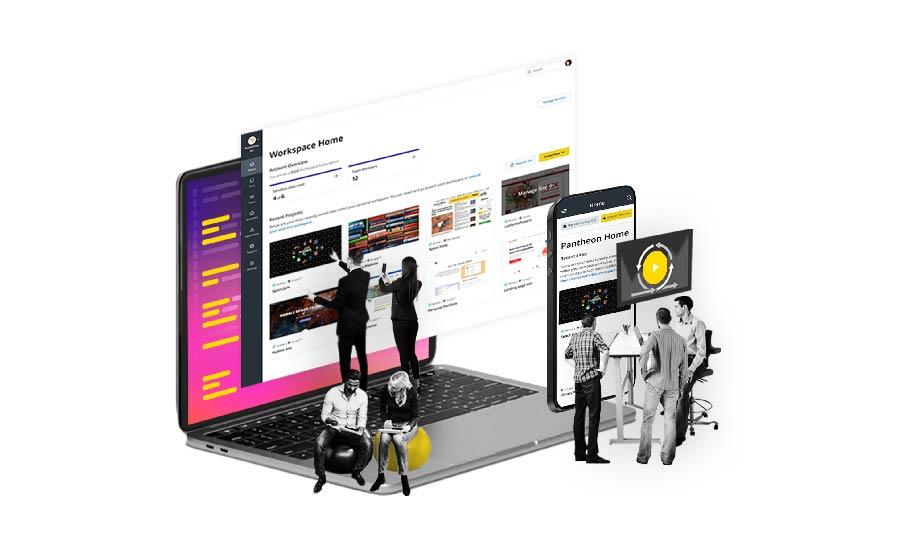How to Create a Consumer-Centric Website Design
Image

Personalized content is the greatest consumer demand, but most brands have trouble meeting it. According to the "2018 Adobe Consumer Content Survey," 67% of consumers think it’s important for brands to automatically tailor content to them, and 42% get annoyed when content isn't relevant to their current situation.
This consumer expectation from brands can be daunting. When it comes to building your website, remember that visitors are no longer asking, “What does this business do?” They're asking, “What does this business do for me?” If you’re responsible for your company’s website, you must be able to answer that question.
Control Your Message
Your website is the channel where you have the most control over messaging and the user experience. Social media, TV, direct mail, etc. can be worthwhile tools to connect with your audience, but you’re always stuck bending to someone else's rules of engagement and design. On your website, you control every pixel and can modify any element as needed. No other platform offers the same level of freedom and agility.
Netflix, for example, has used customer insights to create content for their website, mobile app, and streaming service that appeals to a broad range of international consumers. The streaming video service, which is now available in more than 190 countries, has experimented with customer usage data globally to determine which offerings work best. As the number of subscribers grows, the algorithm continues to improve.
Individualized content is exploding as a marketing tactic. According to Evergage's "2018 Trends in Personalization" survey, 92% of marketers are using personalization in some fashion. Nearly 80% of those marketers are personalizing their emails, about half are personalizing their websites, and about a third are incorporating personalization into mobile or web apps.
Get Into a Consumer Mindset
The path to consumer-centric design involves listening to your customers, understanding their needs, and finding ways to offer them value. This begins with doing your homework before, during, and after you build.
When we kicked off our website redesign project last year, it began with lots and lots of research: content audits; design audits; customer surveys; persona development; and interviews with customers, prospects, and internal stakeholders. It continued with branding workshops, customer needs analyses, and more.
User conversations are happening all the time on every team, and the more you know about who you are trying to reach, the better you will be at getting them to respond. Ask yourself: What do your users wish they could do? What don’t they like? What will provide them with the most value? You’ll often find that if you’ve been doing the right research all along and that you already have these answers.
There is no one-size-fits-all approach to consumer-centric design. It is unique to your audience. You can discover how to optimize the user experience with constant testing programs, focusing on benefits over features, and designing clear customer journeys. Afterward, test the messaging and design to optimize further. The more user-friendly your site is, the better. In fact, one study found that 61% of consumers will leave an e-commerce site and go to a competitor's if they have problems using it.
Be Unique
Seek inspiration from brands you love, but maintain a distinct brand identity so your efforts hold up once visitors have left your site. Users love Slack, for example, because of its usability and integration with other services. But it really won by being customer-centric. It has every feature a user could ever want. Slack only reached that level of execution and attention to detail by spending months talking to users and focusing on their needs. When key users told Slack that something wasn't working, the company immediately fixed it.
Stay on Track
Make no mistake: personalization takes work, but your audience's words and actions will tell you how your user experience and messaging are performing. Make sure to measure and respond to those actions with tools such as Google Analytics, Crazy Egg, and Optimizely. Speak to consumers directly, present new concepts with user testing, and gain broader insights with surveys. It doesn’t stop once results are in. For example, Gap is in the midst of a long-term initiative to offer a more personalized online shopping experience. Greg Schuler, the retailer’s head of user experience design, said the pressure to make e-commerce faster and more rewarding for customers makes it an "infinite journey."
According to Evergage, a little more than half of marketers don’t feel like they have sufficient data to drive personalization. But a tool like Crazy Egg, for example, can help you dive deep into how your audience is responding to content. You can learn how to position calls to action, learn what specific segments of your audience like, and gather data on every click. You can then use that information to embark on a journey with your visitors and match actions to data, which enhances the user experience.
Pantheon Can Boost Your Website Personalization Efforts
When we rebuilt our website, we used a workflow of development, test, and live environments to allow our developers to build and update different aspects of the website simultaneously. By using dev, test, and live, you encourage innovation—you don’t have to disrupt users on the live site to test ideas. By eliminating expensive interruptions, your team can finally operate in close contact to build the site in the most effective way.
Customer-centricity isn't a destination — it's a journey. Fortunately, it's one in which powerful tools are at your disposal. Learn how to use them, and consumers will be glad to follow along with you.